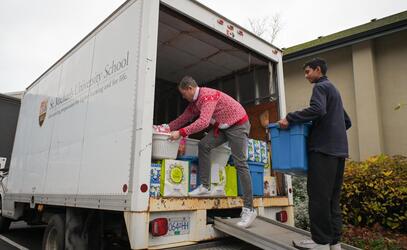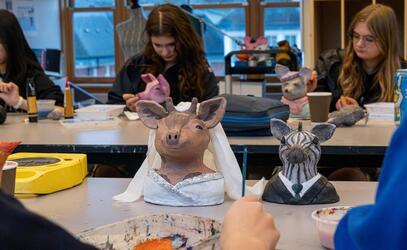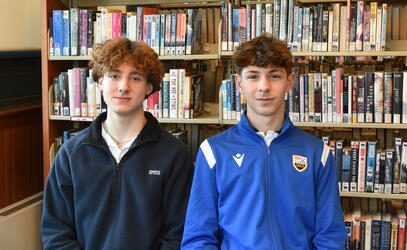The new six-term, or dare I say “hexa-mester,” schedule at the Senior School has created more flexibility around how we teach and schedule classes. This change has even allowed for the introduction of the Grade 9 Applied Design, Skills and Technology (ADST9) course into the timetable.
ADST9 is a one-term course that every Grade 9 student is required to take. This might look different at every school and includes many options that you might remember such as cooking, sewing, drafting, woodworking, and metal shop. For ADST at SMUS, it’s about providing an opportunity for students to apply their knowledge of digital design and coding to solve complex problems where there are no right answers. It’s about learning to pursue an idea and knowing when to let it go. It’s hard fun.
When I took cooking and sewing as part of my home economic rotation in high school, it was about getting hands-on experience in unfamiliar territory. That's still the same. What's changed is the shift to prioritize the development of competencies: a combination of skills, processes, behaviours and habits of mind. For example, in cooking class you may have needed to follow a cake recipe and then were graded based on its appearance or, if your teacher was brave enough, the taste. Instead, an ADST cooking class today would likely have you invent your own cake recipe by researching ingredients, creating a draft recipe, and testing it. That's not to say the end product isn't important, but it is more likely that the skills developed by going through the process itself will be more relevant in preparing students for life.
Building a New Course
The timetable changes breathed new life into ADST9 by providing both increased instructional time and the continuity of seeing students every day. Building off the foundation set by Dave Hlannon and Maureen Hann when ADST9 was periodically integrated into the school year, Brad Ingimundson, Dave, and I were put in a position where we could re-imagine the course and make the experience more meaningful for the students.
When designing any course, one philosophy is to start at the end. As teachers we ask: what do we want students to know, do, and understand by the end of the course?; How are students going to demonstrate this learning?; And how I am I going to assess it? By answering these questions, we can identify the skills students will need to be successful and structure the course accordingly.
ADST lends itself well to project-based work as it provides the ideal setting for students to demonstrate their skills, while engaging them in the hard-fun experience we are after. This year, we are having students design and build a pachinko machine (think pinball, without the flippers). Students design their machine using a vector graphics software and then bring it to life using one of the two laser cutters (thank you, SMUS Parents’ Auxiliary!). Then, they put their circuitry and coding skills to use by integrating an Arduino microcontroller and programming electronic components that interact with the ball – making lights turn on, keeping score and making noises. Hard? Yes. Fun? Absolutely.
The design cycle is at the heart of everything we do in this course. Rather than assessing students solely based on the end product, we are looking for students to be able to use the design cycle to inform the creation and development of their projects. It is an iterative process that involves defining a problem, researching and brainstorming ideas, building a prototype, and then testing it. The process then repeats based on the results of the testing phase. When are we done? Never! Although there are no right answers, we can always make improvements. We can always be better.
It is this attitude and approach to life we hope students walk away with.
ADST at Home
If your child took a keen interest in this course (or they may not even be in Grade 9 but wants to learn these hard fun skills), I would encourage you to check out www.arduino.cc. This is the platform that we use to build circuits and program electronic components. Their website has a comprehensive tutorial section for independent learning and the project hub is a great place to share projects or look for inspiration. Starter kits are available through their website, but others, such as Elegoo, offer starter kits for under $50. A free online simulator can also be found on www.tinkercad.com.
For the design aspects of the course, we use an open-source software called InkScape. It is free to download and there are lots of tutorials available on YouTube if they want to take their skills to the next level.
The last resource I suggest students take advantage of is their SMUS teachers. Even if we may not have your child in our classes, we are always happy to support students in following their passions.


